The days are longer, the temperatures are warmer, and motorcycles are roaming wild. It’s official, spring has sprung. But, as May becomes June and June becomes July, hot weather is in store; hot weather that makes sitting atop a scorching engine practically unbearable.
In such situations, many riders resort to shedding layers. That includes layers of protective gear. Sure, riding in jean shorts, a T-shirt, and flip-flops provides relief from blazing temps but it provides little relief from road rash. Safety and comfort aren’t mutually exclusive. You don’t have to lose your shirt (in both senses of the phrase) to stay cool this summer. Here are a few ways to beat the heat without sacrificing safety.
Hydration
Fatigue. Dizziness. Confusion. All three pose a danger when riding a motorcycle, and all three are symptoms of dehydration. In order to keep core temperatures down, we sweat. (I’m sure I don’t need to tell you.) Like many cooling systems, our body’s cooling system requires water — and lots of it. Properly hydrating before a ride is important for that reason, but staying hydrated is just as critical. That’s especially true when the mercury rises.
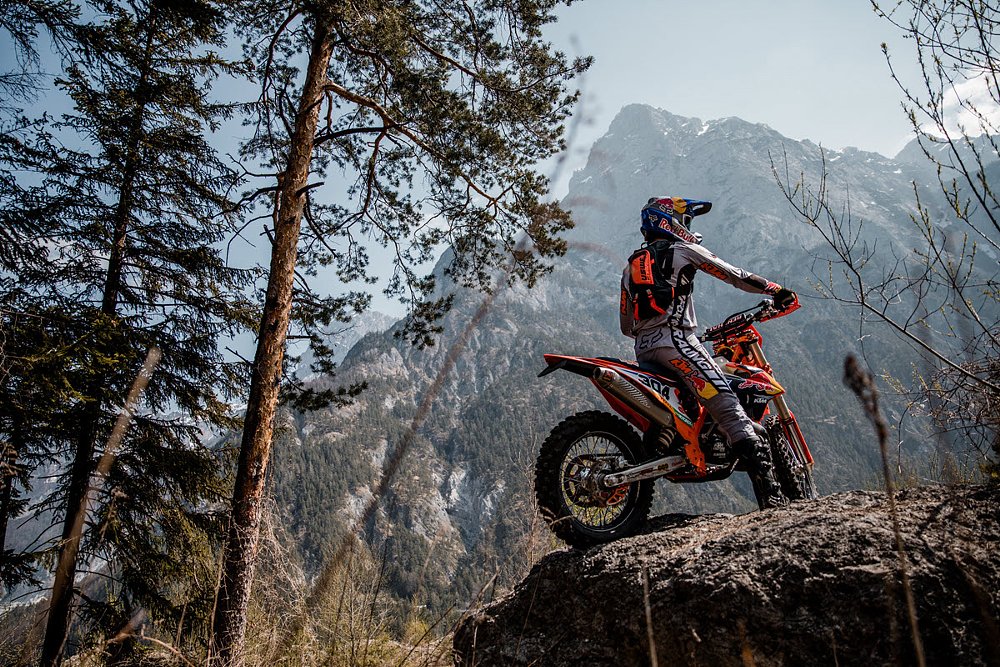
For many, a mid-ride drink is a quick pit stop away. If you’re in a remote area, on the other hand, drinkable water may not be as accessible. That’s when a hydration pack is invaluable. Lucky us, there are options on the market to suit every situation. Long-distance tourers and off-road explorers benefit from the storage capacity of something like the USWE Moto Hydro 12-Liter Adventure Pack. At the same time, minimalist options like the Fox Racing 5-liter Utility Lumbar serve light packers. Hydration packs from Sedici and Fly offer bang for buck, while Ogio’s range hits all price points.
Nowadays, even ADV-style jackets like the Sedici Marco Mesh 2, Leatt Moto 5.5 Enduro, and Alpinestars AMT-10R Drystar XF come with hydration bladder-compatible pockets (hydration bladder sold separately). If instant access is key, AGV’s Pista GP RR routes the hydration line directly to the user’s mouth with its integrated water valve. USWE offers a similar aftermarket solution for MX helmets with its Handsfree Kit.
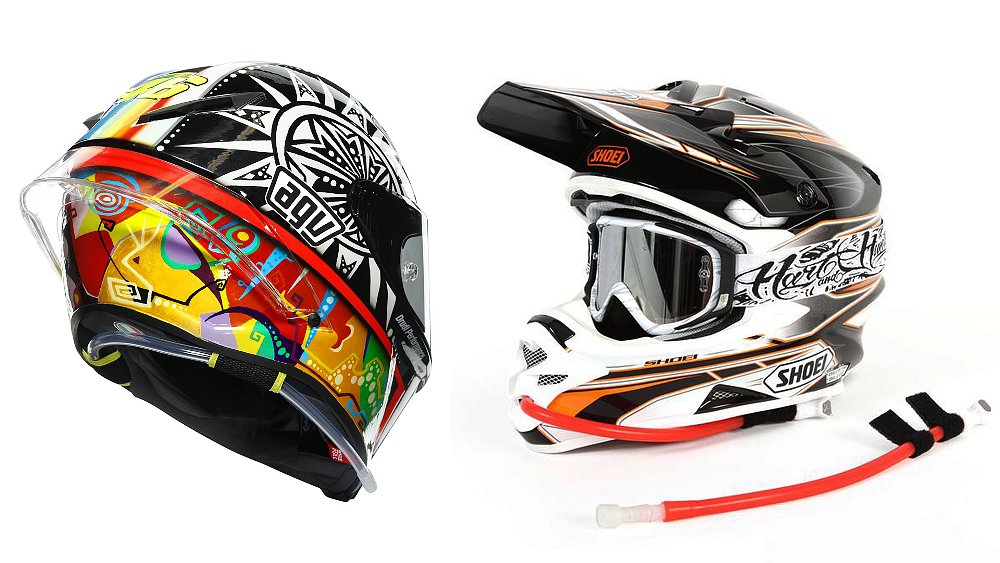
In the end, it doesn’t matter how you hydrate. It just matters that you hydrate. The human body can regulate its temperature. You just have to give it what it needs to do so.
Cooling fabrics and base layers
If you seek even more relief, gear constructed from cooling fabric is a worthwhile investment. Many cooling garments employ polymer-embedded materials that absorb liquid and slowly evaporate it over time. Before each use, the rider simply submerges the garment in water for several minutes and the evaporation over the course of the ride yields a cooling effect.
Manufacturers utilize the cooling material in various ways, too. For instance, Alpinestars, 100%, Sedici, and EVS all offer cooling vests, while Klim corners the cooling pants market with its Aggressor Cool -1.0. Some neck tubes, bandanas, and socks also benefit from polymer-imbued fabric.
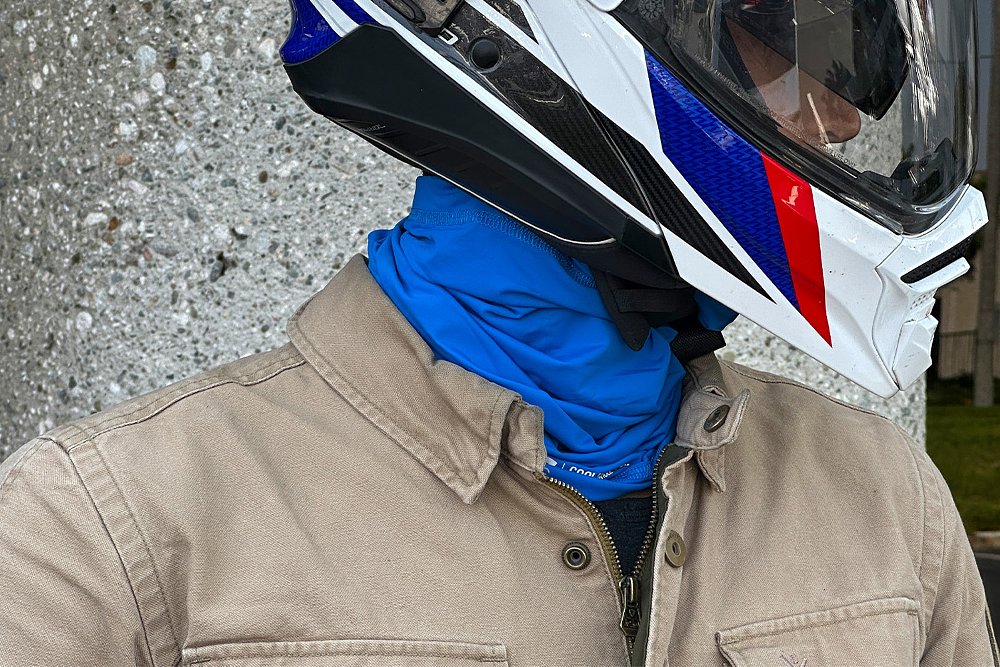
If you’re pinching pennies, you can always drench your regular old cotton T-shirt and achieve a similar effect. I’ve done so on several occasions and always seemed to arrive at my destination completely dry (thanks, arid Southern California climate).
Even if you don't want to soak your gear in water, you can improve your comfort level with sweat-wicking base layers, which work similarly. They are made of fabrics that allow your sweat to evaporate and have the cooling effect nature intended instead of holding onto the moisture and letting you steam inside your outer layer. These base layers are particularly useful on a hot summer day at the track, where moisture-wicking fabric allows users to easily slip out of a leather race suit. But no matter what kind of riding you're doing, choosing a base layer built to manage your own sweat is often the simplest and one of the most effective ways to be more comfortable in the heat.
Textile mesh gear
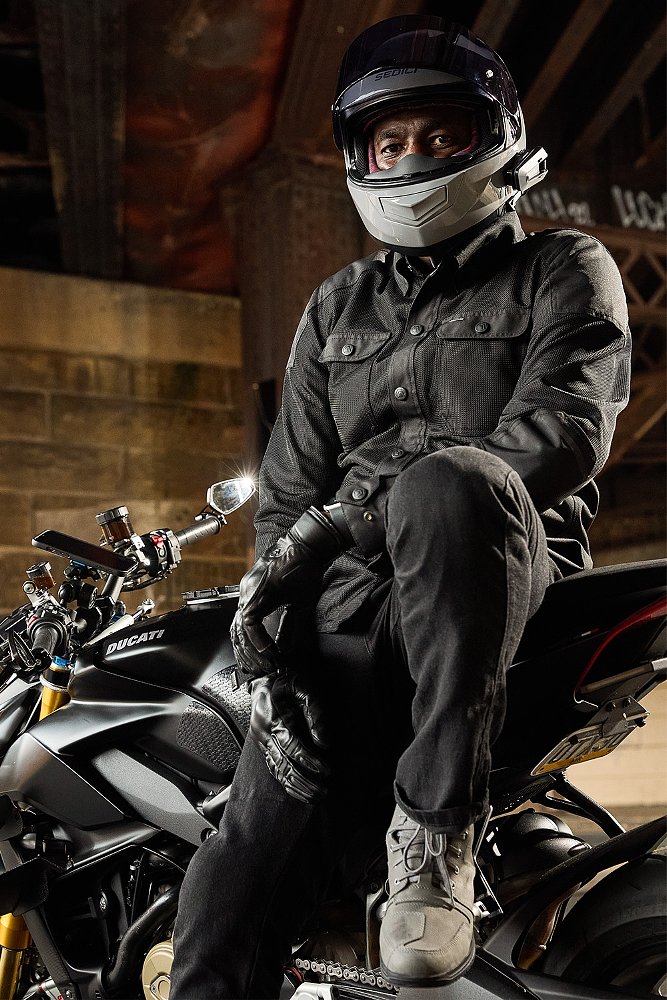
When most people think of riding in sweltering summer weather, the first thing that comes to mind is textile gear. More specifically, textile gear with mesh panels. Whether it’s found on a four-season jacket or summer riding pants, mesh material maximizes airflow to the wearer. What’s more, nearly all of today’s textile jackets feature abrasion-resistant mesh, which prioritizes ventilation without sacrificing safety.
In years past, many questioned the durability of mesh materials. At least compared to their leather counterparts. However, most modern motorcycle gear utilizes high-strength, industrial-grade mesh. A prime example is the Klim Induction Pro Jacket, which sports Karbonite mesh and an AA CE rating.
Large mesh panels can also be found on jackets such as Dainese’s Air Frame 3, REV'IT!’s GT-R Air 3, and REAX’s Point Breeze. We can’t leave out pants like the Sedici Alexi 2, Klim Baja S4, or Alpinestars Ramjet Air, but if a matching set is more your style, the aptly named Bilt Blaze 3 (jacket and pants) is an excellent choice. Neither shoes nor gloves go overlooked, either, with options like the Alpinestars Faster 3 Rideknit shoes and the Scorpion EXO Cool Hand II gloves.
Point being, riders can combat the heat by dressing shoulders to toes in mesh gear. It may not flow as much air as a tank top and Daisy Dukes, but it certainly does a much better job of saving your hide in a slide. If textile gear doesn’t tickle your fancy, however, there is one last option.
Perforated and vented gear
Despite greater use of cordura, aramid, and Dyneema in modern moto gear, leather still ranks as one of the toughest materials on the market. That’s why some riders wear leather jackets or race suits year-round, including the dog days of summer. Whether it’s worn by a cruiser aficionado or a sport bike enthusiast, perforated leather finds a happy medium between ventilation and protection.
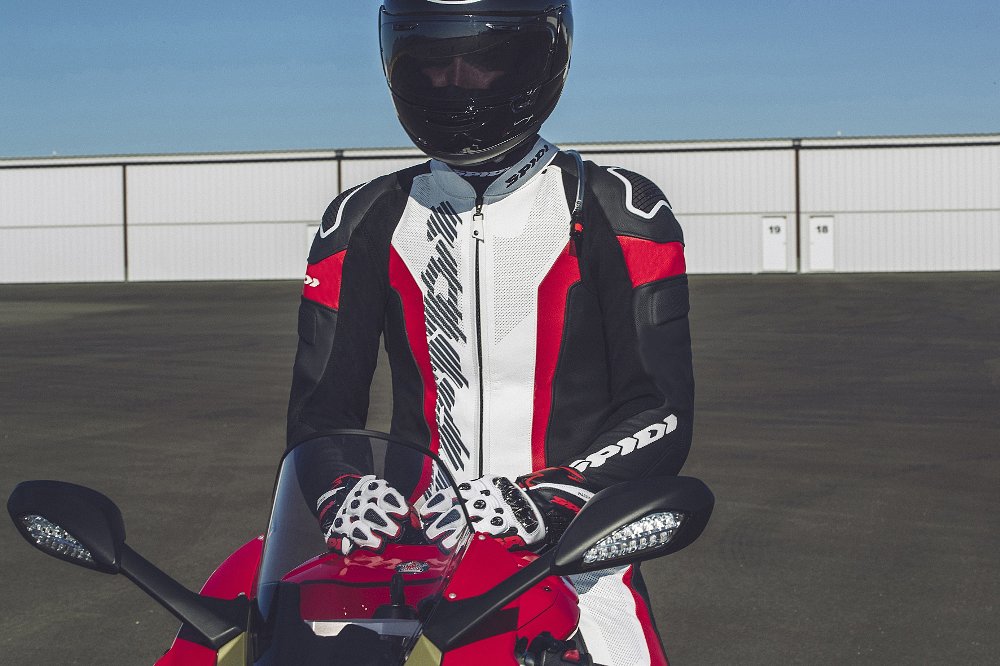
For the go-fast crowd, the Alpinestars T-GP Plus R V4 Airflow jacket, TCX RT-Race Pro Air boots, and Held Phantom Air gloves are clear standouts. Meanwhile, the Spidi Laser Pro Perforated Race Suit’s large perforated panels and hydration system compatibility make it a top candidate for track days. When it comes to the cruiser and cafe crowd, expect the Merlin Cambrian jacket, REAX Tasker Perforated gloves, and TCX Street 3 Air shoes to offer both form and function.

While the solutions above specifically built to handle hot temperatures on a motorcycle, there are some other outside-the-box alternatives that will also help riders endure the hottest months of the year.
Honorable mentions
- Feel the breeze: Windscreens help reduce fatigue by directing oncoming wind away from the rider. That’s valuable during winter, spring, and fall, but extra airflow is always welcome during the summer months. That’s why purchasing a shorter windscreen or removing the wind protection altogether can help crank up Mother Nature’s air conditioner. It goes without saying, but naked bikes and choppers need not apply.
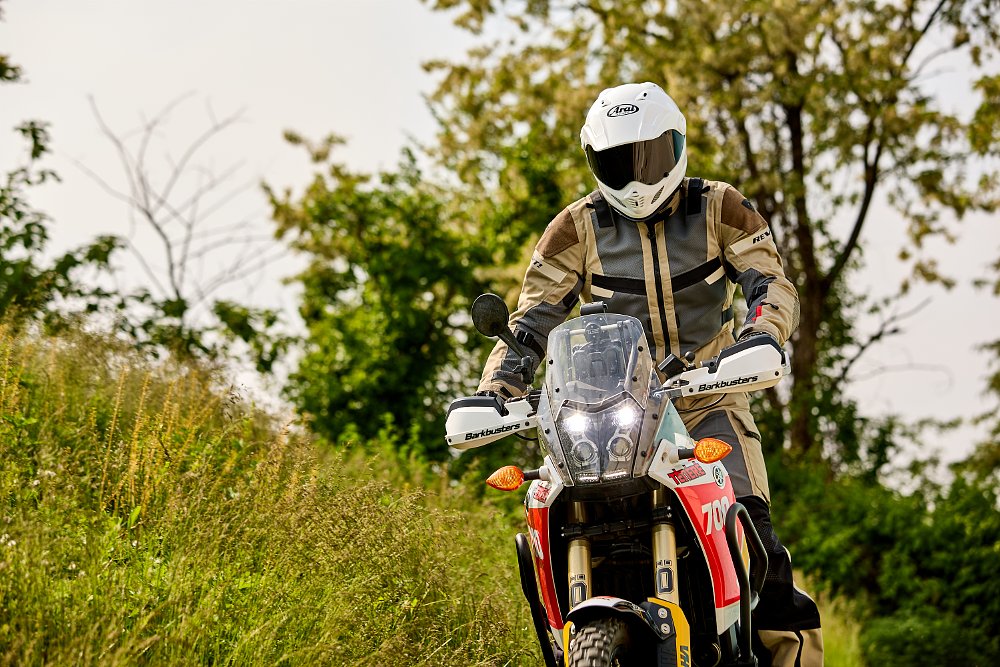
- Hydration tablets/powders: Packed with minerals and electrolytes, hydration tablets/powders fight dehydration by replacing what riders lose when they sweat. Sodium and potassium aid with fluid balance while calcium and magnesium support cellular function. Whether riding on the street or in the dirt, adding a hydration tablet to your hydration bladder can help improve your comfort and performance.
- A shade of shade: Sunburns are no fun, especially when they’re shaped like your helmet’s viewport. Smoke, mirror-tinted, and photochromic shields don’t just offer some shelter from the sun’s harmful rays but also reduce eye strain throughout long days in the saddle. One final pro tip: sunblock. It’s a must for oft-exposed parts like the back of the neck and the top of the wrists. Apply heavily and regularly.
Despite riding year-round in sunny Southern California, despite enduring triple-digit temperatures at the track and on the trail, the only thing I’m sure of is that I don’t have all the answers. If you know a unique way to keep cool during the summer months, don’t be afraid to share your tips in the comment section. We motorcyclists could use all the help we can get with warmer weather on the horizon.











